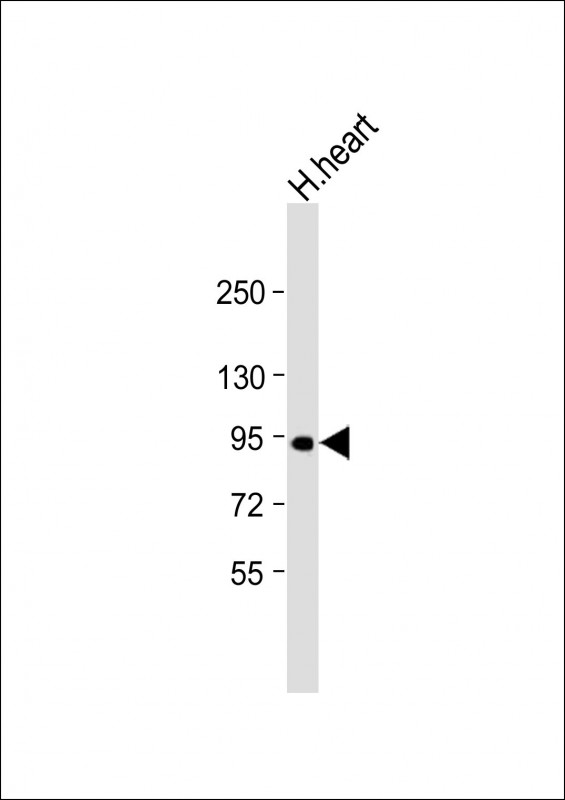Rabbit Polyclonal Antibody to PPP1R3F
货号:
P33740
别名:
Protein phosphatase 1 regulatory subunit 3F, R3F, PPP1R3F
应用:
WB,IHC
反应种属:
Human
抗体类型:
Primary antibody
Swissprot:
Q6ZSY5
规格:
目录价
在线咨询
Description |
|---|
This gene encodes a protein that has been identified as one of several type-1 protein phosphatase (PP1) regulatory subunits. One or two of these subunits, together with the well-conserved catalytic subunit, can form the PP1 holoenzyme, where the regulatory subunit functions to regulate substrate specificity and/or targeting to a particular cellular compartment. Alternative splicing results in multiple transcript variants. |
Specification |
|
|---|---|
| Aliases | Protein phosphatase 1 regulatory subunit 3F, R3F, PPP1R3F |
| Entrez GeneID | 89801 |
| Swissprot | Q6ZSY5 |
| WB Predicted band size | 82.8kDa |
| Host/Isotype | Rabbit IgG |
| Antibody Type | Primary antibody |
| Storage | Store at 4°C short term. Aliquot and store at -20°C long term. Avoid freeze/thaw cycles. |
| Species Reactivity | Human |
| Immunogen | This PPP1R3F antibody is generated from rabbits immunized with a KLH conjugated synthetic peptide between 549-578 amino acids from the C-terminal region of human PPP1R3F. |
| Formulation | Purified antibody in PBS with 0.05% sodium azide. |
Application |
|
|---|---|
| WB | 1/1000 |
| IHC | 1/100-1/500 |
Product Image
-
Anti-PPP1R3F Antibody (C-term) at 1:1000 dilution + human heart lysate Lysates/proteins at 20 µg per lane. Secondary Goat Anti-Rabbit IgG, (H+L), Peroxidase conjugated at 1/10000 dilution. Predicted band size : 83 kDa Blocking/Dilution buffer: 5% NFDM/TBST.

-
PPP1R3F Antibody (C-term) (Cat. #P33740) western blot analysis in HepG2 cell line lysates (35ug/lane).This demonstrates the PPP1R3F antibody detected the PPP1R3F protein (arrow).

-
PPP1R3F Antibody (C-term) (Cat. #P33740)immunohistochemistry analysis in formalin fixed and paraffin embedded human pancreas tissue followed by peroxidase conjugation of the secondary antibody and DAB staining.This data demonstrates the use of PPP1R3F Antibody (C-term) for immunohistochemistry. Clinical relevance has not been evaluated.







 鄂公网安备42018502007531号
鄂公网安备42018502007531号

